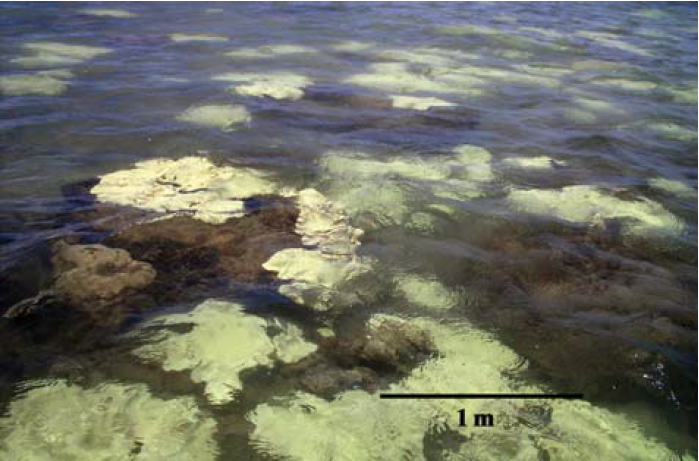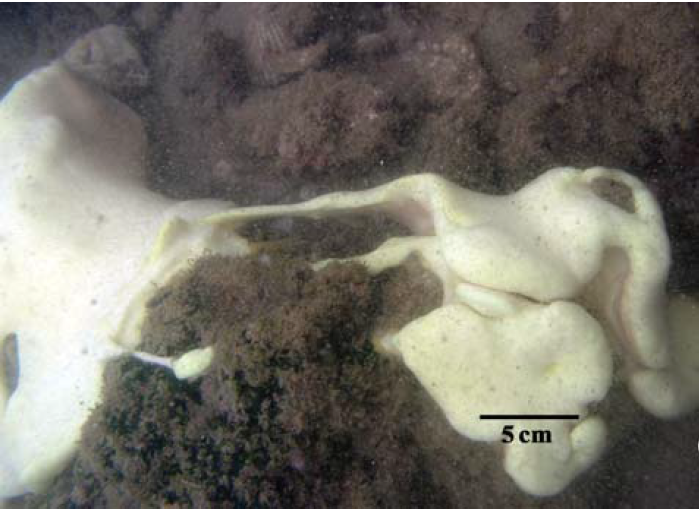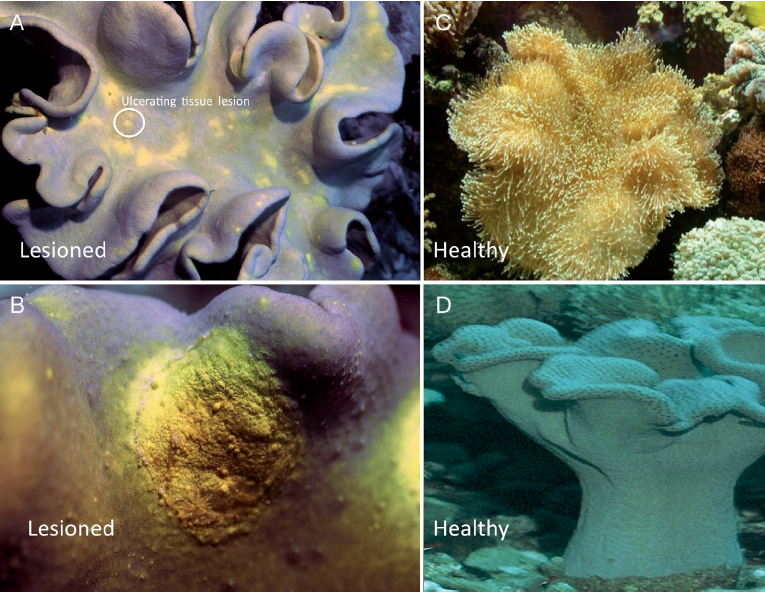Sarcophyton ehrenbergi is widely distributed and abundant, therefore currently are neither threatened nor endangered in population numbers (Fabricius & Alderslade, 2001). However, there have been studies done showing minor threats that contribute to mortality in them.
CoralBleaching
Many studies have been conducted regarding the implication of climate change regarding corals. This could be problematic because high heat stress leads to algae symbioses called zooxanthelle leaving the host known as coral bleaching. One of the worst cases of Sarcophyton spp. Bleaching can be seen in Thailand, where corals have turned white (fig 1) andstart to disintegrate (fig 2) in one month of bleaching due to high salinityand high temperatures (Chavanich et al., 2009).
 |
 |
Figure 1 Mass Sarcophyton spp.bleaching event in Thailand (Picture taken from Chavanich et al., 2009)
|
Figure 2 Disintegrating Sarcopjhytonspp. after one month of bleaching (Picture taken from Chavanich et al., 2009)
|
Other studies showed exposing S. ehrenbergi to heat stress showed lossin their symbiodiniums, however S.ehrenbergi showed better resistance in exposure to heat compared to hardcorals (Strychar et al., 2005). Similar studies also showed the same resultwith dying zooxanthelle in high salt water, however, the host seemed to showmore tolerance even to up to a temperature of 36°C for 48 hours (Sammarco & Strychar, 2013). Overall, studies seem to convey that the host it self will beable to survive in increase of temperature but not for zooxanthelle. If bothcoral and zooxanthelle are able to acclimate over time to tolerate temperaturechange, literatures suggest climate change may not be an issue for thisspecies.
Disease
There is a bacterium that causes what is called‘ulcerated yellow spot syndrome’, which are caused by pathogens associated withaquaculture that attack the soft coral tissue causing yellow spots around thesurface (fig 3). These bacterium, Photobacteriumdamselae ssp. Piscicida causes disease in aquaculture fish stock, butstudies have shown that it is able to attack Sarcophyton ehrenbergi tissue lesions (Cervino et al., 2012). Softcorals that were infected showed reduction of zooxanthellae with the reductionof up to 40%, and a up to 80% drop of new zooxanthellae production.
 |
|
Fig 3 A &B display ulcerated yellowspot syndrome as seen when polyps are retracted compared with healthy Sarcophyton ehrenbergi in picture C& D. (Picture taken from Cervino et al., 2012)
|
|